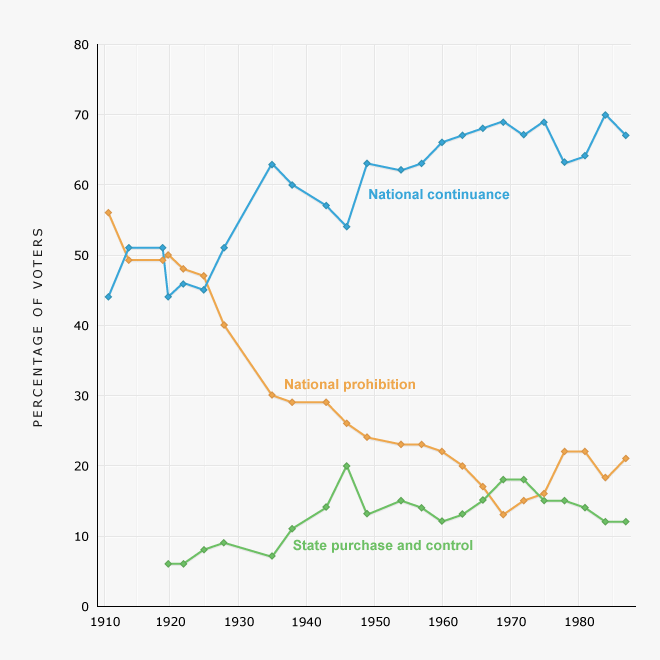
This graph charts the voting patterns of New Zealanders in national liquor licensing referendums, which were held at the same time as the general election (every three years). There were two options – national prohibition or national continuance – until the December 1919 poll, when the third option of state purchase and control of liquor was added.
The prohibition vote came very close achieving nation-wide prohibition in the 1910s and 1920s, but was significantly outweighed by the continuance vote in subsequent polls. Temperance campaigners had worried that the state control option would attract moderate voters who saw it as an alternative to prohibition, but it did not overly affect the results and attracted continuance rather than prohibition votes. These regular referendums were abolished in 1989. New Zealand has held far more polls on prohibition than any other country.
Note: between 1911 and 1919, 60% of all votes were required to enact prohibition. In 1919 the requirement was dropped to 50%.
Using this item
Te Ara - The Encyclopedia of New Zealand

This item is licensed under a Creative Commons Attribution-NonCommercial 3.0 New Zealand Licence
Source: New Zealand official yearbook











Add new comment